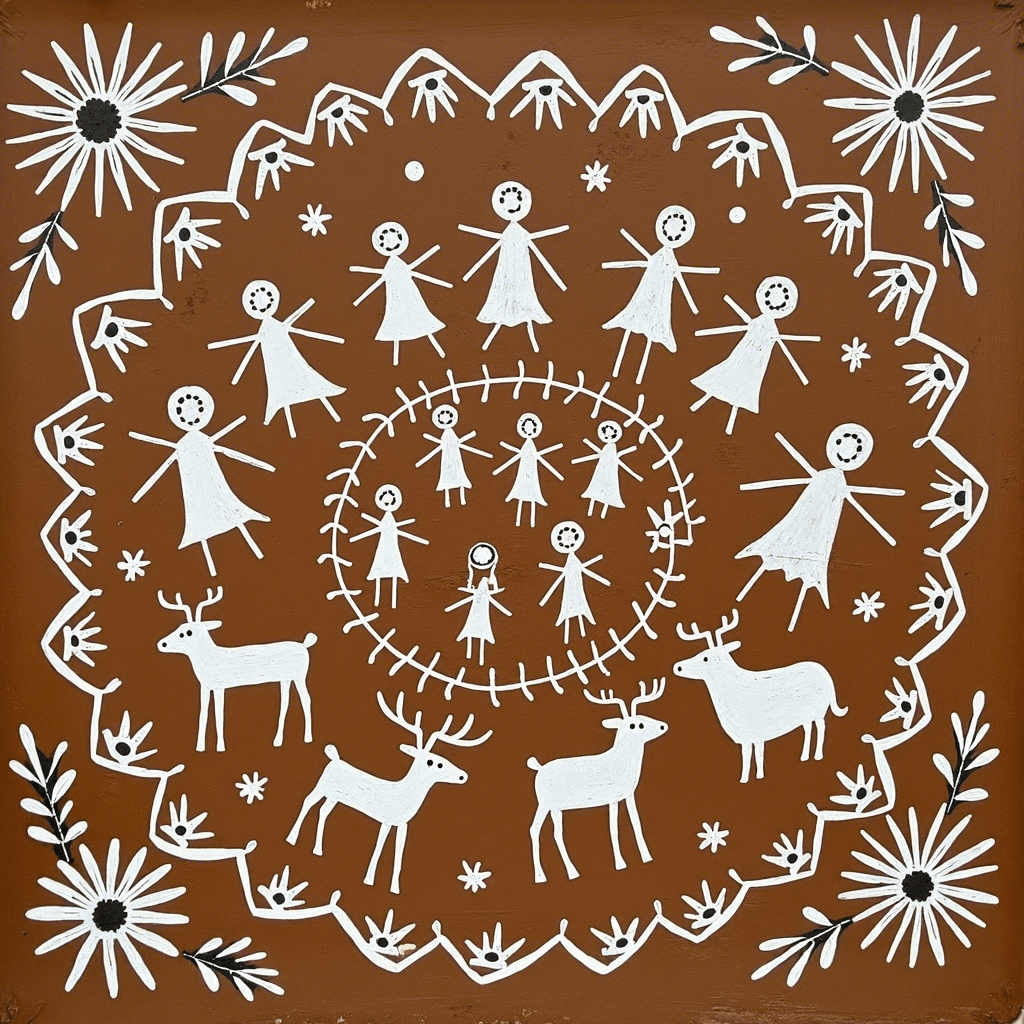
Indian Warli Art
Traditional tribal art from the Warli tribe in India, featuring simple stick figures and geometric shapes to depict daily life, nature, and rituals.
Quick Navigation
External Resources
Overview
Origin
Maharashtra, India (Warli tribe)
Historical Period
2500 BCE to present
Cultural Significance
Warli art is a tribal art form that reflects the daily life, rituals, and connection to nature of the Warli people, often used in celebrations and ceremonies.

Historical Timeline
2500 BCE
Earliest similar geometric patterns found
1970s
First documentation by anthropologists
1976
Recognition as contemporary art form
Techniques
Painting with white pigment on mud walls
Simple stick figures and geometric shapes
Depictions of community activities and nature
Use of natural materials like rice paste and bamboo sticks
Cultural Context
Warli art is a tribal art form that reflects the daily life, rituals, and connection to nature of the Warli people, often used in celebrations and ceremonies.
Did You Know?
Warli art traditionally uses white pigment on a mud background, often painted on the walls of homes to celebrate harvests and weddings.